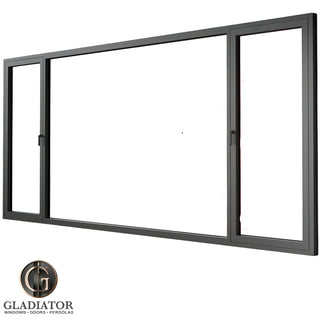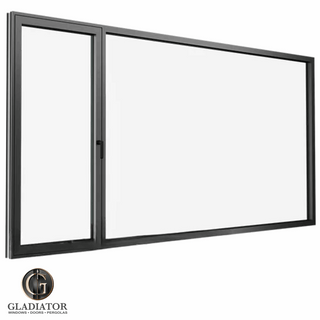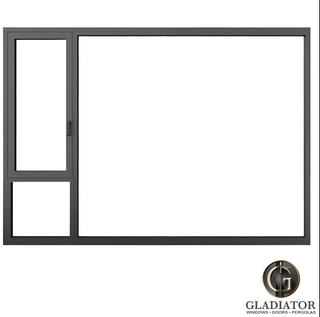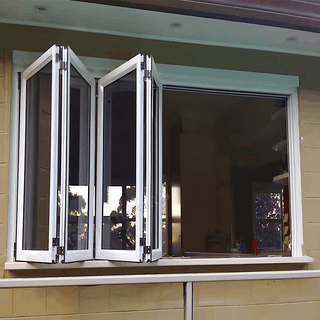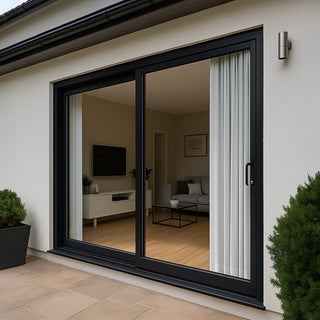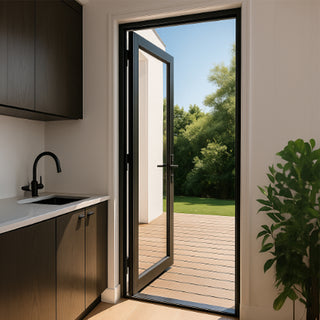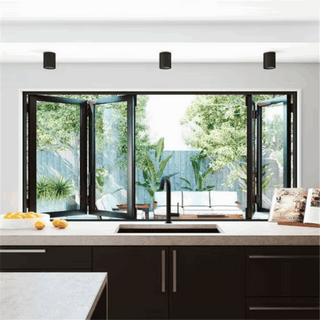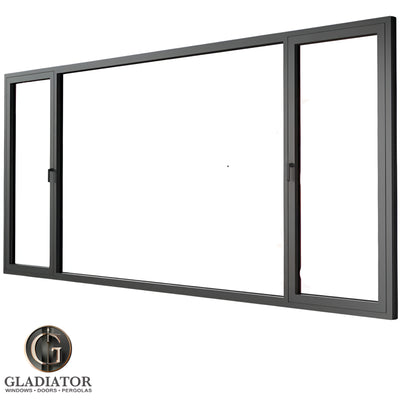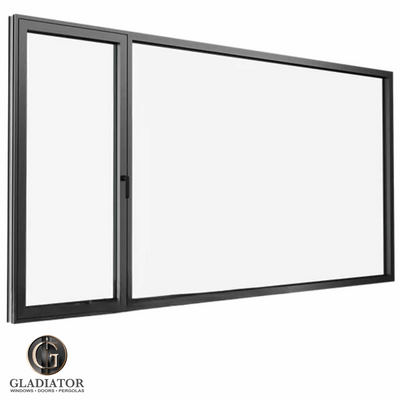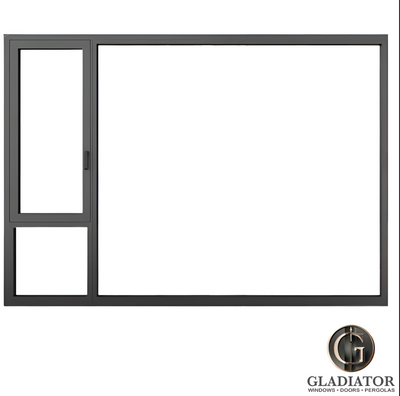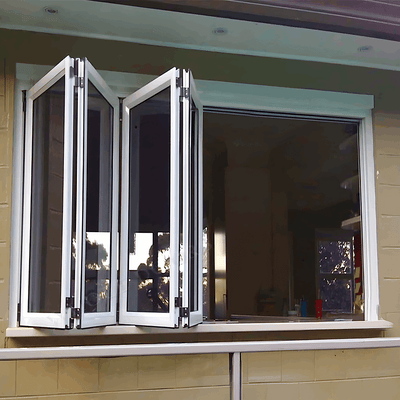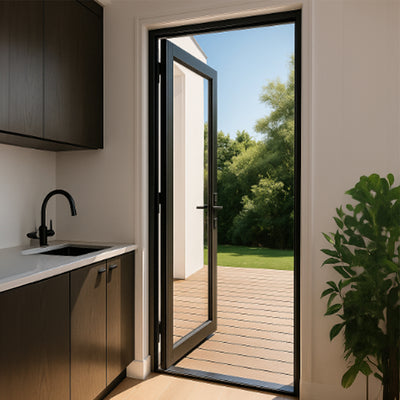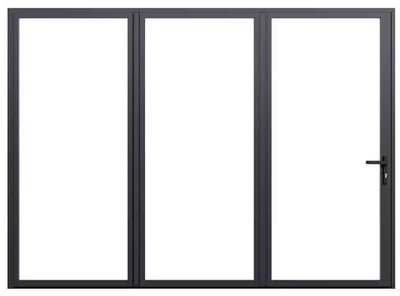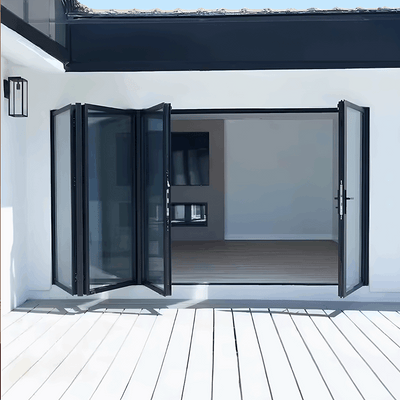Why Large Windows Demand Special Cleaning Approaches
Large windows offer stunning views and fill rooms with natural light. However, cleaning these expansive panes presents unique challenges. Standard methods often fall short. For example, sunlight reveals every smudge, streak, and speck of dust on a large window. This requires a more thorough approach than a quick wipe-down.
Environmental Factors and Large Windows
Environmental factors also affect large windows differently. Wind can spread dirt and debris unevenly, creating a grimy patchwork. Spot cleaning won't be enough; a complete and consistent cleaning strategy is essential. You might be interested in: How to master window cleaning. Furthermore, temperature fluctuations can impact cleaning solutions, potentially causing streaks.
The Physics of Streaking
The science of streaking matters, too. Larger surfaces give cleaning solutions more opportunity to dry unevenly, resulting in those annoying streaks. It's like painting a large canvas: if the paint dries at different rates, you see inconsistencies. Similarly, large window cleaning must be efficient and consistent.
Safety Considerations for Large Windows
Safety is paramount when cleaning large, high windows. Reaching across wide panes can strain your back and shoulders. Careful positioning and perhaps special equipment are needed. The risk of falls also increases dramatically, emphasizing the importance of safety precautions.
Debunking Common Misconceptions
Many believe using more cleaning solution equals cleaner windows. This is often untrue. Too much solution can actually increase streaking and leave a sticky film that attracts dirt. This is especially noticeable on large windows. Using the wrong cloth can scratch the glass or leave lint.
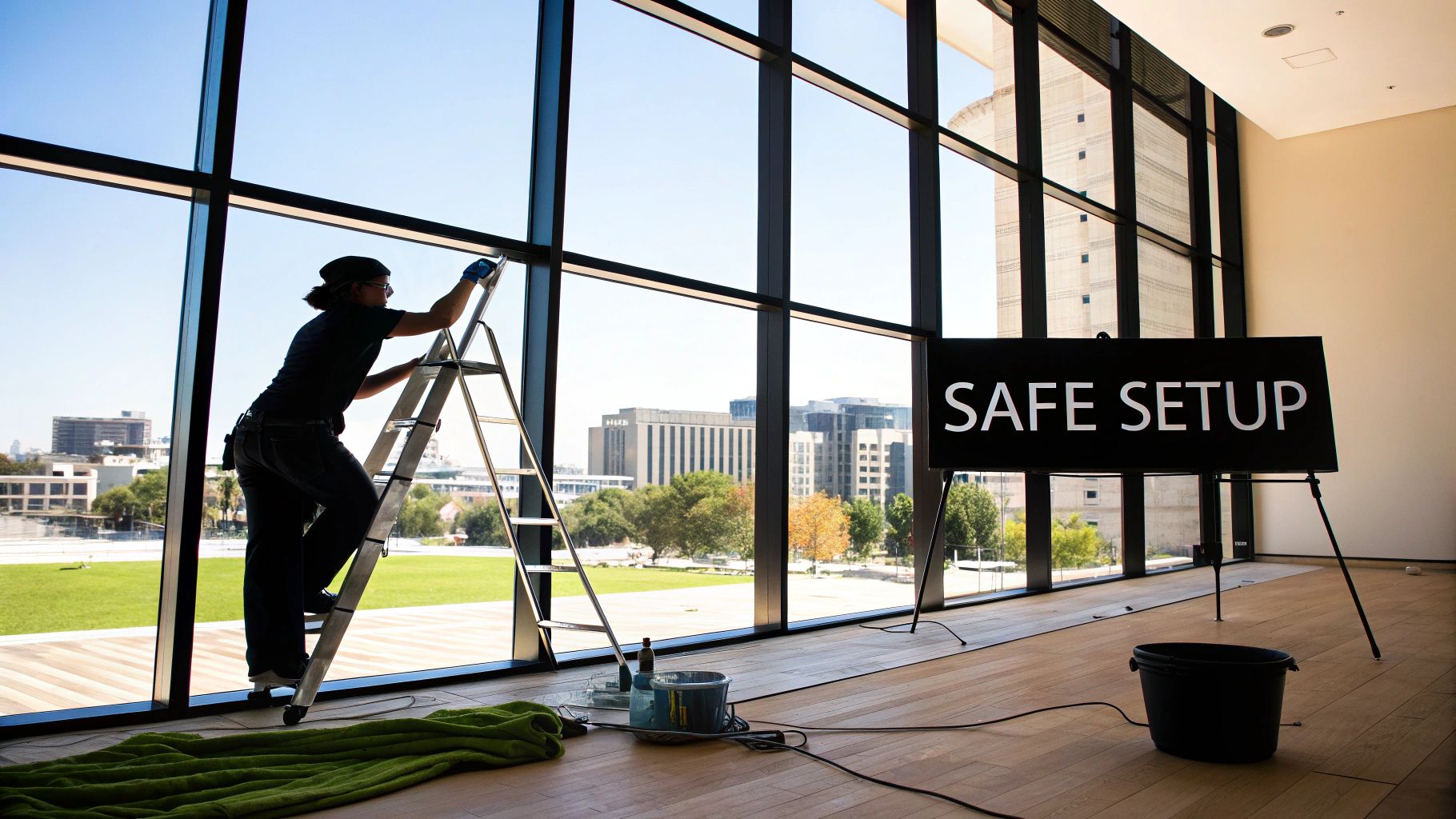
The demand for effective and safe large window cleaning is fueling growth in the specialized cleaning market. The building window cleaning systems market, worth over USD 2.07 billion in 2024, is projected to reach USD 9.79 billion by 2037, with a CAGR of over 12.7%. This growth is driven by factors like urbanization, high-rise construction, and advancements in automated cleaning. Find more detailed statistics here. Understanding the unique needs of large windows is crucial for sparkling, streak-free results, along with safety and efficiency.
Pro-Level Tools That Transform Large Window Cleaning

Getting perfectly clean, streak-free large windows takes more than just effort; it requires the right tools. Professional window cleaners know this and invest in specialized equipment designed for large glass surfaces. This investment pays off in both efficiency and superior results.
The Power of Extension Poles
Extension poles are essential for cleaning large or high windows. These aren't your typical household poles. Professional versions are made from lightweight but strong materials like carbon fiber or aluminum. They provide the necessary reach without being difficult to control. This allows cleaners to cover large areas quickly and safely, often reducing the need for ladders.
- Key Features to Look For: Secure locking mechanisms, comfortable grips, and compatibility with various cleaning attachments.
Squeegees: More Than Just a Rubber Blade
The squeegee is a fundamental tool for professional window cleaning. Cleaning large windows, however, often calls for specialized squeegee designs. Wider blades allow you to cover more surface area with each stroke, drastically cutting down cleaning time. Many professionals use T-bars with replaceable rubber blades for optimal cleaning and streak-free results.
- Choosing the Right Rubber: Different rubber hardnesses work better for different temperatures and window types. Experiment to find the best fit for your needs.
Microfiber: The Modern Cleaning Cloth
Microfiber cloths have changed the way professionals clean large surfaces. Their super-fine fibers effectively trap dirt and grime, leaving a polished, streak-free shine. Unlike traditional cloths, microfiber minimizes the chance of scratching delicate glass. This results in less work and better cleaning results.
- Proper Microfiber Care: Wash microfiber cloths regularly and separately to keep them effective. Avoid using fabric softener, as it can clog the fibers.
Budget-Friendly Alternatives and Essential Tools
While professional-grade tools offer the best performance, you don't have to spend a fortune to effectively clean large windows. Here are some budget-friendly options:
- Combination Tools: Squeegees with built-in microfiber scrubbers provide a cost-effective all-in-one solution.
- Telescopic Wash Brushes: Brushes with extending handles can be a more affordable alternative to full extension poles.
- DIY Cleaning Solutions: A simple mix of water and a little dish soap can often be just as effective as expensive commercial cleaners. Check out our guide on How to Master window cleaning.
Tool Technique: Maximizing Effectiveness
The right technique is just as important as the right tools. Overlapping squeegee strokes, for instance, helps prevent streaks and ensures complete coverage. Using the correct angle and pressure with your squeegee minimizes water spots. Find out more in our article about How to select the right windows.
The following table compares various tools designed for cleaning large windows. It highlights their features, benefits, ideal uses, and approximate price points.
Essential Large Window Cleaning Tools Comparison
| Tool Type | Best For | Reach Capability | Ease of Use | Price Range | Durability |
|---|---|---|---|---|---|
| Extension Pole | High Windows | Excellent | Medium | Moderate | High |
| Wide Squeegee | Large Panes | Moderate | High | Low | Medium |
| Microfiber Cloths | All Purposes | N/A | High | Low | Medium |
| Telescopic Wash Brush | Lower, Wider Windows | Moderate | High | Low | Medium |
| Combination Tool | Quick Cleaning | Moderate | High | Low | Medium |
As this table demonstrates, each tool has its strengths. Choosing the right tool depends on the specific cleaning task.
By understanding the purpose and proper use of these essential tools, you can greatly improve your large window cleaning results, achieving professional-level cleanliness and clarity. Investing in the right equipment will save you time and give you the satisfaction of sparkling, streak-free windows.
The Foolproof Process for Streak-Free Large Windows
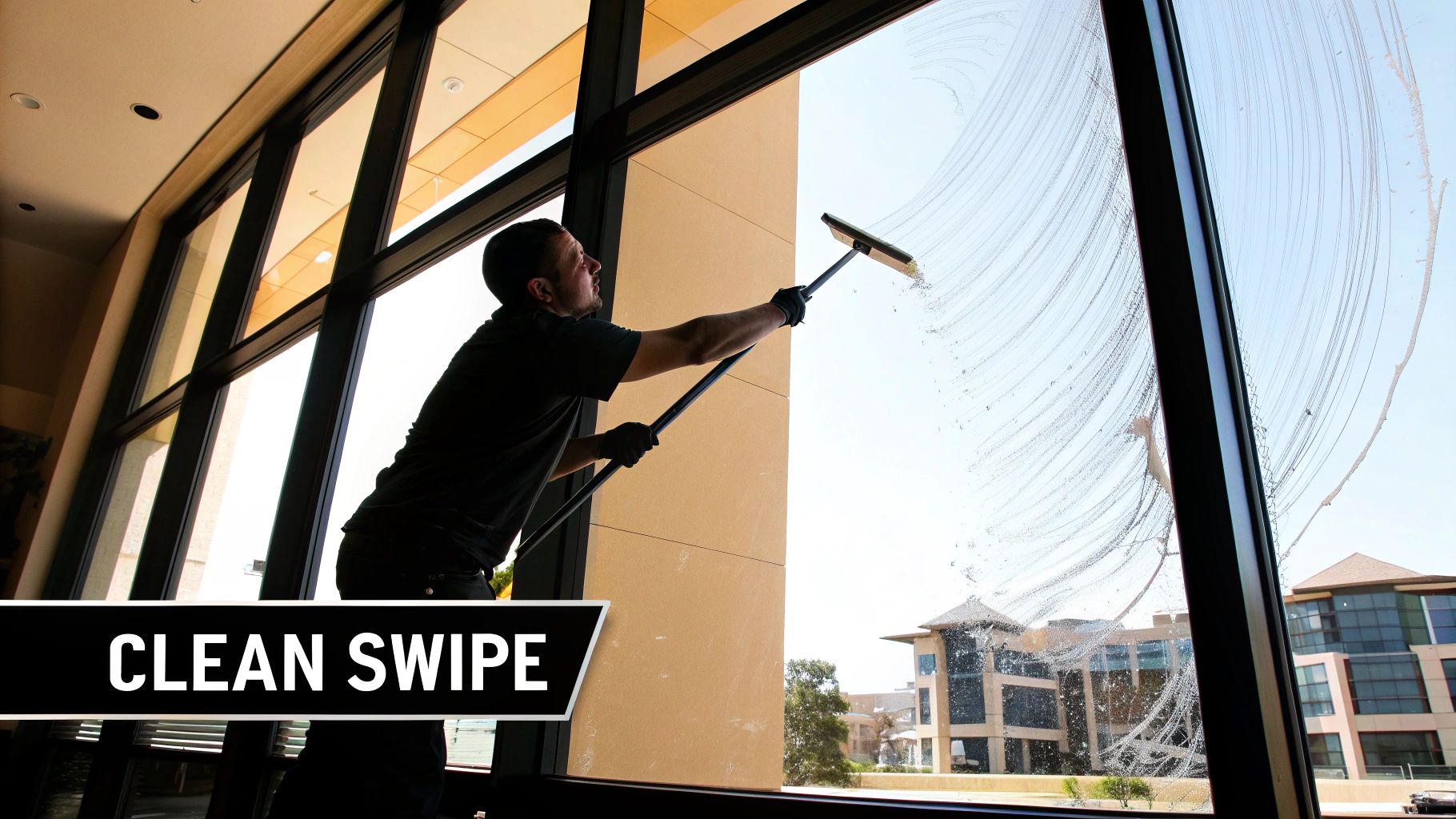
Turning large, grimy windows into sparkling clean panes involves a methodical approach. It's not just about hard work; it's about having the right strategy. Let's break down a professional approach, from initial preparation to the final touches.
Preparation is Key
First, assemble your essential tools: a sturdy extension pole, a wide squeegee with a sharp, clean blade, a bucket of cleaning solution, and a good supply of microfiber cloths. Protecting your floors and furniture is just as important. Lay down drop cloths to catch any stray drips. This preparation will make the whole process smoother and more efficient.
The Cleaning Sequence
For large windows, the cleaning sequence is key. Begin by dusting and rinsing the window to remove loose debris. Think of it like sweeping before you mop. This prevents scratches during the actual cleaning. Next, apply your cleaning solution evenly across the entire surface. For heavily soiled windows, let the solution sit for a few minutes to break down the grime. This step maximizes the cleaning power of the solution.
Wiping Techniques and Timing
Professional window cleaners use specific wiping techniques to prevent streaks, especially on larger panes. The "S" pattern, overlapping each stroke, guarantees full coverage and eliminates missed spots. Timing is also important. Avoid letting the solution dry on the window, as this can cause streaks. Work section by section, quickly and efficiently, especially if the window is in direct sunlight. This will prevent you from having to re-clean areas.
Tackling Edges and Corners
Edges and corners often require extra attention. After squeegeeing, carefully dry these areas with a clean microfiber cloth to remove any remaining solution and prevent residue buildup. For hard-to-reach upper corners, a smaller squeegee or a microfiber cloth attached to your extension pole is invaluable. This ensures a consistently clean surface across the entire window.
Body Positioning and Safety
When cleaning large windows, proper body positioning is crucial for both effectiveness and safety. Maintain a comfortable stance and avoid overreaching. Utilize your extension pole for high or distant areas to minimize strain. This allows you to reach the entire window surface safely and with greater ease. On the topic of professional window cleaning, the market for window cleaning services is experiencing significant growth. In 2023, the market was valued at USD 2.68 billion and is projected to reach USD 5.34 billion by 2031. Find more detailed statistics here. This growth highlights the increasing demand for professional-level window cleaning, particularly for large windows.
Troubleshooting Common Issues
Even with the best techniques, you might encounter some challenges. Water spots are a frequent issue, often caused by hard water or allowing the cleaning solution to dry too rapidly. Using distilled water can help minimize spotting. Edge buildup can be addressed with a dedicated edge cleaning tool or a more concentrated cleaning solution applied directly to the affected area. Addressing these common issues will help ensure consistently clean, streak-free results on your large windows. By following this foolproof process, you can achieve professional-quality results, transforming even the dirtiest large windows into gleaming features of your home or office.
Choosing the Perfect Solution for Your Glass Type
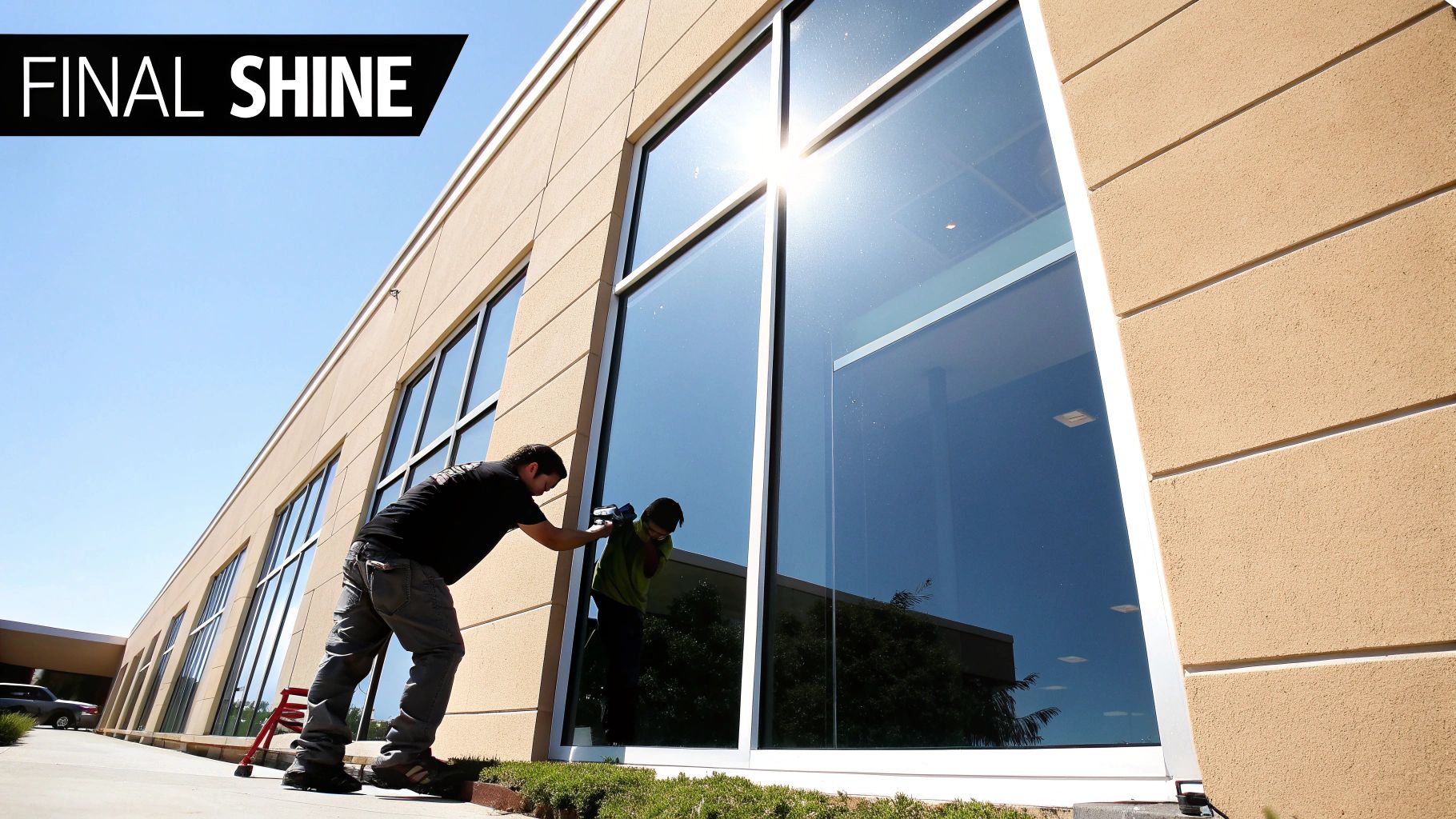
Not all large windows are the same. Different types of glass react differently to various cleaning solutions. Using the wrong formula can lead to streaks, damage, or simply wasted effort. Understanding your window’s glass type is the first step to a sparkling clean.
Matching Solutions to Glass Types
Professional window cleaners use specific formulas for different glass types. Tinted windows, for instance, can be sensitive to ammonia-based cleaners, which can damage the film. Low-E glass, designed for energy efficiency, has a special coating requiring gentle care. Harsh chemicals can degrade this coating and reduce its effectiveness. Textured glass requires a cleaning solution that can reach into crevices without leaving residue.
The following table provides a helpful guide for choosing the right cleaning solution for your large windows:
Cleaning Solutions for Different Large Window Types This table presents the most effective cleaning solutions for various types of large windows, including appropriate ingredients, effectiveness, and safety considerations.
| Window Type | Recommended Solution | Key Ingredients | Effectiveness | Safety Notes | Environmental Impact |
|---|---|---|---|---|---|
| Standard Glass | Water and mild dish soap | Water, dish soap | Highly effective for general dirt and grime | Safe for most standard glass types | Low impact, biodegradable ingredients |
| Tinted Glass | Vinegar-based solution | White vinegar, water | Effective for removing dirt and smudges without damaging tint | Test in an inconspicuous area first | Low impact, natural ingredients |
| Low-E Glass | Non-abrasive cleaner | Water, mild detergent | Gentle cleaning preserves the special coating | Avoid harsh chemicals and abrasive materials | Low to moderate impact depending on the specific product |
| Textured Glass | Concentrated solution with soft-bristled brush | Water, dish soap, optional vinegar | Effective cleaning in crevices and textured surfaces | Use a soft-bristled brush to avoid scratching | Low impact, consider using natural ingredients |
This table summarizes the recommended cleaning approaches for various window types. Choosing the correct approach ensures both cleanliness and the preservation of the window’s special properties.
The Surprising Power of Homemade Solutions
While commercial cleaners are convenient, homemade solutions can be surprisingly effective, often surpassing expensive products. A simple mixture of water and white vinegar is a powerful and gentle cleaning agent. Adding a few drops of dish soap can further enhance its cleaning power. This means professional results don't always require professional-grade products.
- Dilution Ratios: The correct dilution is crucial. Too much vinegar can leave a residue, while too little may be ineffective. A good guideline is one part vinegar to ten parts water.
Ingredients to Avoid
Some common cleaning ingredients can harm your windows. Ammonia, although a powerful cleaner, can be harsh on coatings and even etch some glass types. Abrasive cleaners can scratch surfaces, creating imperfections that trap dirt. This is particularly important with large windows, where damage is more visible. Learn more in our article about How to select the right windows and maintain them properly.
Eco-Friendly Alternatives
Many eco-friendly cleaning solutions are available. Look for products with plant-based ingredients that avoid harsh chemicals. This is a great choice for those sensitive to strong fumes. Using reusable microfiber cloths instead of paper towels reduces waste.
Seasonal Adjustments
Temperature and humidity affect cleaning solution performance. In hotter months, solutions may dry too quickly, leaving streaks. You might need to adjust your technique or dilute the solution more. In humid conditions, the solution might not dry properly, potentially causing water spots. Increasing the vinegar can help. These adjustments are similar to modifying recipes based on altitude or oven temperature – small changes make a big difference. By choosing the right cleaning solution and technique, you can achieve beautiful, streak-free large windows that enhance your home or office.
Staying Safe When Tackling Towering Windows
Cleaning large windows, especially those high up, presents unique challenges. It's not just about having the right tools and techniques, but also prioritizing safety. Taking the necessary precautions ensures you can enjoy the results of your hard work without incident.
Essential Safety Equipment
Before you start, investing in the correct safety equipment is paramount. This is especially true for large or high windows. A stable ladder is a must-have. Make sure it's the appropriate height for the job and placed on a firm, level surface. For higher windows, safety harnesses and anchoring points provide an essential safeguard against falls. Gloves will protect your hands from cleaning solutions and potential broken glass, while eye protection shields your eyes from splashes and debris.
Ladder Safety: Positioning and Stability
Proper ladder placement is vital. The 4-to-1 rule dictates that the base of the ladder should be one foot away from the wall for every four feet of height. This forms a stable triangle, minimizing the risk of tipping. Avoid overreaching while on the ladder. Instead, reposition it often to maintain a safe working zone. This might seem time-consuming, but it significantly reduces the risk of falls.
Weather Awareness: The Impact on High-Altitude Cleaning
Weather plays a significant role, especially when working at height. Wind can easily destabilize a ladder, making it extremely dangerous. Even a light breeze at ground level can translate into strong gusts higher up. Rain creates slippery surfaces and reduces visibility, drastically increasing the risk of accidents. Postpone your cleaning until conditions are dry and safe for optimal results.
Body Mechanics: Preventing Strain Injuries
Cleaning large windows can put a strain on your back, neck, and shoulders. Employing proper body mechanics can help prevent injuries. Maintain a straight back and avoid twisting. Engage your core for stability and lift with your legs, not your back, when moving equipment. This applies to both ground-level and high-altitude cleaning.
- Take Breaks: Frequent breaks are essential, especially during extended cleaning sessions. This allows your muscles to rest and prevents fatigue.
Learning From Case Studies: Avoiding Common Accidents
Examining common window cleaning accidents can offer valuable insights into prevention. Many incidents involve falls from ladders due to improper positioning or overreaching. This reinforces the importance of adhering to the 4-to-1 rule. Other accidents stem from the incorrect use of cleaning solutions or tools, leading to chemical burns or broken glass. Understanding these risks allows you to take proactive preventative measures. The window cleaning industry in the United States is significant, with projected revenues reaching $2.9 billion by 2024 and $3.2 billion by 2029. Explore this topic further. The industry employs over 89,765 people, highlighting the need for standardized safety practices. You might also find this resource helpful: How to master window and door maintenance. By following these safety guidelines, you can confidently clean your large windows and minimize the risk of accidents. Remember, the goal is sparkling clean windows without compromising your safety.
DIY vs. Hiring Pros: Making the Smart Choice
Cleaning large windows always presents a homeowner with a dilemma: tackle it yourself or bring in the professionals? This decision depends on several factors, and understanding them can save you time, money, and a lot of potential frustration. Let's explore the key considerations to help you make the right choice for your large window cleaning project.
Cost Analysis: DIY vs. Professional Cleaning
One of the first things to consider is the overall cost. DIY might initially appear cheaper, but those hidden expenses can quickly add up. Think about the price of cleaning solutions, tools like extension poles and squeegees, and the value of your own time. For smaller properties with fewer, easily accessible large windows, DIY might be the most economical choice. However, for larger homes, multi-story buildings, or windows requiring specialized equipment, professional cleaning is often surprisingly affordable.
Assessing Your Windows and Your Abilities
The complexity of the job plays a crucial role in your decision. How easy is it to access your windows? Do they have specific coatings or treatments that require special cleaning solutions? If your windows are exceptionally high, need specialized equipment, or have delicate features, hiring professionals is often the safer and more efficient choice. Their expertise and specialized tools can prevent accidental damage and guarantee a better clean. Also, think about your comfort level with heights and your physical ability to handle the job. Cleaning large windows can be physically demanding, so it's important to honestly assess your capabilities.
The Hidden Costs of DIY Gone Wrong
While DIY can be successful, there's a risk of things going wrong. Using the wrong cleaning solution can damage window coatings, and incorrect techniques can lead to streaks or scratches. Replacing a damaged window is far more expensive than hiring a professional from the start. Professionals carry insurance and are trained to handle all sorts of window types and cleaning challenges.
The Investment in Professional Equipment
If you choose to clean your large windows yourself, you'll need the proper tools. Investing in professional-grade equipment, such as sturdy extension poles and high-quality squeegees, will significantly improve your results. But these tools can be an expensive upfront investment. Weigh this investment against the cost of regular professional cleanings. The global cleaning services market, valued at $55.7 billion in 2020 and projected to surpass $111.5 billion by 2030, demonstrates the increasing demand for specialized cleaning services. Discover more insights about this industry. This growth includes the demand for large window cleaning.
Decision-Making Framework: Choosing the Best Approach
Consider these factors when deciding between DIY and professional cleaning:
- Number and size of windows: A few large, easy-to-reach windows are more manageable for DIY than numerous or difficult-to-access ones.
- Window type: Specialized coatings or textured glass might require professional expertise.
- Your comfort level with heights and physical ability: Safety and comfort should always be top priorities.
- Budget: Compare the cost of tools and materials with professional cleaning quotes.
- Time commitment: DIY requires a significant time investment, while professionals can complete the job efficiently.
By carefully evaluating these factors, you can make a well-informed decision that ensures sparkling, streak-free large windows without unnecessary costs or risks. Whether you choose DIY or hire professionals, choosing the right approach will lead to a satisfying outcome.
Keeping Large Windows Pristine Between Cleanings
The joy of sparkling clean windows, especially large ones, is undeniable. But maintaining that shine between deep cleanings can feel like a never-ending chore. The key is to adopt some smart maintenance strategies. With a proactive approach and a few simple tricks, you can keep your windows looking their best and significantly extend the time between major cleaning sessions.
Protective Treatments: A Professional Touch
Many professional window cleaners use protective treatments, similar to car wax, to repel dirt and water. These treatments create a barrier that prevents grime from sticking to the glass, minimizing how often you need to clean. In fact, these treatments can often double the time between cleanings, saving you valuable time and effort. Some even offer UV protection, which helps prevent fading of your furniture and adds another layer of value.
Quick-Touch Maintenance: Stay Ahead of the Grime
Between full cleanings, a quick-touch maintenance routine can make a world of difference. A simple weekly wipe-down with a spray bottle of water and vinegar and a microfiber cloth can prevent dirt buildup. Think of it like brushing your teeth: a little regular maintenance prevents bigger problems later. This quick wipe removes light dust and grime before they become embedded, keeping your windows looking freshly cleaned. Learn more in our article about How to master window cleaning and maintenance.
Environmental Management: Control Your Surroundings
Your surrounding environment plays a big role in how quickly your windows get dirty. Overhanging trees, for instance, can drop pollen and sap, while sprinkler systems can leave unsightly water spots. Trimming back vegetation and adjusting sprinkler heads can significantly reduce window grime. By proactively managing your surroundings, you minimize dirt sources and reduce cleaning frequency. Consider also the direction your windows face.
Window Orientation and Targeted Cleaning
Different window orientations attract different kinds of debris. West-facing windows are more exposed to afternoon sun and rain, which often leads to water spots. East-facing windows might collect more morning dew and insect residue. Therefore, it's important to tailor your cleaning approach based on window orientation. For west-facing windows, more frequent spot cleaning for water spots might be necessary. East-facing windows, on the other hand, may need more attention to remove insect debris.
Early Intervention: Stop Damage Before it Starts
Addressing spots and stains quickly prevents permanent damage. Bird droppings, for example, are acidic and can etch glass if not removed promptly. Wiping away these substances immediately with a damp cloth can prevent lasting marks. Much like treating a stain on clothing right away, this proactive approach to stain removal prevents the problem from becoming permanent, saving you from more intensive cleaning or even window replacement down the line.
By incorporating these strategies, you can significantly reduce the frequency of deep cleanings and keep your large windows looking their best. This means less time cleaning and more time enjoying a bright, clean home.
Ready to upgrade your windows and simplify cleaning? Visit Gladiator Window and Doors today and explore our selection of high-quality, custom-made windows and doors designed for easy maintenance and lasting beauty.























